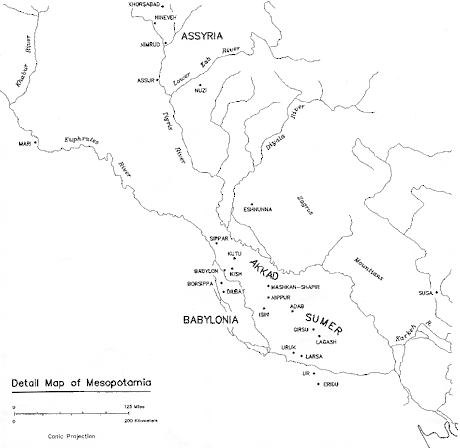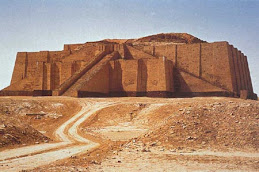
Intro
Introduction/Fact Sheet
View a map of Iraq.
(http://www.geocities.com/iraqinfo/index.html?page=
/iraqinfo/sum/hist/mesopotamia.html)
 Tomb of Unknown Soldier in Baghdad Tomb of Unknown Soldier in Baghdad |
Iraq is a land of beauty. It was once known though as the land called Mesopotamia. It means the land in between the river and as you probably can tell, it`s in between two rivers. The Tigris and Euphrates, which sweep down from the mountains of Turkey to meet, eighty-five miles north of the Arabian Gulf, at one of the alleged sites of the Garden of Eden. This land is the cradle of great civilizations.
Iraqis are proud of their past (dating back rouphly 5,000 years) proud of forebears like Hammurabi, Sennacherib and Nebuchadnezzar, and of ancient Babylon, Ur of the Chaldees, Nineveh and Nimrud and the countless other sites of Iraq's antiquity which outnumber Greece or the Valley of the Nile.View a map of Iraq.
(http://www.geocities.com/iraqinfo/index.html?page=
/iraqinfo/sum/hist/mesopotamia.html)
Conflict on Mesopotamia
The Martyr's Monument in Baghdad, Iraq, is dedicated to the people who died in the eight-year war that Iraq fought with Iran. Conflict between the two countries started in 1980 and ended in 1988.
In February 1979, Saddam Hussein's plans and the course of Iraqi history were drastically altered by the overthrow of the shah of Iran. Hussein viewed the 1979 Islamic Revolution in Iran as both a threat and an opportunity. The downfall of the shah and the confusion prevailing in postrevolutionary Iran suited Saddam Hussein's regional ambitions. A weakened Iran seemed to offer an opportunity to project Iraqi power over the Gulf, to regain control over the Shatt al Arab waterway, and to augment Iraqi claims to leadership of the Arab world. More ominously, the activist Shia Islam preached by the leader of the revolution in Iran, Ayatollah Sayyid Ruhollah Musavi Khomeini, threatened to upset the delicate Sunni-Shia balance in Iraq, and a hostile Iran would threaten Iraqi security in the Gulf. Furthermore, deepseated personal animosities separated the two leaders. The two men held widely divergent ideologies, and in 1978 Hussein had expelled Khomeini from Iraq--reportedly at the request of the shah--after he had lived thirteen years in exile in An Najaf.
For much of Iraqi history, the Shias have been both politically impotent and economically depressed. Beginning in the sixteenth century, when the Ottoman Sunnis favored their Iraqi coreligionists in the matter of educational and employment opportunities, the Shias consistently have been denied political power. Thus, although the Shias constitute more then 50 percent of the population, they occupy a relatively insignificant number of government posts. On the economic level, aside from a small number of wealthy landowners and merchants, the Shias historically were exploited as sharecropping peasants or menially employed slum dwellers. Even the prosperity brought by the oil boom of the 1970s only trickled down slowly to the Shias; however, beginning in the latter half of the 1970s, Saddam's populist economic policies had a favorable impact on them, enabling many to join the ranks of a new Shia middle class.
Widespread Shia demonstrations took place in Iraq in February 1977, when the government, suspecting a bomb, closed Karbala to pilgrimage at the height of a religious ceremony. Violent clashes between police and Shia pilgrims spread from Karbala to An Najaf and lasted for several days before army troops were called in to quell the unrest. It was the 1979 Islamic Revolution in Iran, however, that transformed Shia dissatisfaction with the Baath into an organized religiously based opposition. The Baath leadership feared that the success of Iran's Islamic Revolution would serve as an inspiration to Iraqi Shias. These fears escalated in July 1979, when riots broke out in An Najaf and in Karbala after the government had refused Ayatollah Muhammad Baqir as Sadr's request to lead a procession to Iran to congratulate Khomeini. Even more worrisome to the Baath was the discovery of a clandestine Shia group headed by religious leaders having ties to Iran. Baqir as Sadr was the inspirational leader of the group, named Ad Dawah al Islamiyah (the Islamic Call), commonly referred to as Ad Dawah. He espoused a program similar to Khomeini's, which called for a return to Islamic precepts of government and for social justice.C
(http://www.geocities.com/iraqinfo/index.html?page=
/iraqinfo/sum/hist/mesopotamia.html)
In February 1979, Saddam Hussein's plans and the course of Iraqi history were drastically altered by the overthrow of the shah of Iran. Hussein viewed the 1979 Islamic Revolution in Iran as both a threat and an opportunity. The downfall of the shah and the confusion prevailing in postrevolutionary Iran suited Saddam Hussein's regional ambitions. A weakened Iran seemed to offer an opportunity to project Iraqi power over the Gulf, to regain control over the Shatt al Arab waterway, and to augment Iraqi claims to leadership of the Arab world. More ominously, the activist Shia Islam preached by the leader of the revolution in Iran, Ayatollah Sayyid Ruhollah Musavi Khomeini, threatened to upset the delicate Sunni-Shia balance in Iraq, and a hostile Iran would threaten Iraqi security in the Gulf. Furthermore, deepseated personal animosities separated the two leaders. The two men held widely divergent ideologies, and in 1978 Hussein had expelled Khomeini from Iraq--reportedly at the request of the shah--after he had lived thirteen years in exile in An Najaf.
For much of Iraqi history, the Shias have been both politically impotent and economically depressed. Beginning in the sixteenth century, when the Ottoman Sunnis favored their Iraqi coreligionists in the matter of educational and employment opportunities, the Shias consistently have been denied political power. Thus, although the Shias constitute more then 50 percent of the population, they occupy a relatively insignificant number of government posts. On the economic level, aside from a small number of wealthy landowners and merchants, the Shias historically were exploited as sharecropping peasants or menially employed slum dwellers. Even the prosperity brought by the oil boom of the 1970s only trickled down slowly to the Shias; however, beginning in the latter half of the 1970s, Saddam's populist economic policies had a favorable impact on them, enabling many to join the ranks of a new Shia middle class.
Widespread Shia demonstrations took place in Iraq in February 1977, when the government, suspecting a bomb, closed Karbala to pilgrimage at the height of a religious ceremony. Violent clashes between police and Shia pilgrims spread from Karbala to An Najaf and lasted for several days before army troops were called in to quell the unrest. It was the 1979 Islamic Revolution in Iran, however, that transformed Shia dissatisfaction with the Baath into an organized religiously based opposition. The Baath leadership feared that the success of Iran's Islamic Revolution would serve as an inspiration to Iraqi Shias. These fears escalated in July 1979, when riots broke out in An Najaf and in Karbala after the government had refused Ayatollah Muhammad Baqir as Sadr's request to lead a procession to Iran to congratulate Khomeini. Even more worrisome to the Baath was the discovery of a clandestine Shia group headed by religious leaders having ties to Iran. Baqir as Sadr was the inspirational leader of the group, named Ad Dawah al Islamiyah (the Islamic Call), commonly referred to as Ad Dawah. He espoused a program similar to Khomeini's, which called for a return to Islamic precepts of government and for social justice.C
(http://www.geocities.com/iraqinfo/index.html?page=
/iraqinfo/sum/hist/mesopotamia.html)
War in Mesopotamia
History - The Iran Iraq War (see Articles)
Iran Iraq War
Iraqi soldiers celebrate after recapturing the Faw Peninsula in Iraq during the Iran-Iraq War. Behind them is a bullet-ridden portrait of Iranian leader Ayatollah Ruhollah Khomeini. In 1988, after eight years of fighting, the United Nations helped the two countries reach a cease-fire agreement that returned borders to their prewar status.
Of the many conflicts in progress around the world in early 1988, the Iran-Iraq War was by far the bloodiest and the costliest. The Iran-Iraq War was multifaceted and included religious schisms, border disputes, and political differences. Conflicts contributing to the outbreak of hostilities ranged from centuries-old Sunni-versus-Shia (for and Arab-versus-Persian religious and ethnic disputes, to a personal animosity between Saddam Hussein and Ayatollah Khomeini. Above all, Iraq launched the war in an effort to consolidate its rising power in the Arab world and to replace Iran as the dominant Persian Gulf state. Phebe Marr, a noted analyst of Iraqi affairs, stated that "the war was more immediately the result of poor political judgement and miscalculation on the part of Saddam Hussein," and "the decision to invade, taken at a moment of Iranian weakness, was Saddam's"
Iraq and Iran had engaged in border clashes for many years and had revived the dormant Shatt al Arab waterway dispute in 1979. Iraq claimed the 200-kilometer channel up to the Iranian shore as its territory, while Iran insisted that the thalweg--a line running down the middle of the waterway--negotiated last in 1975, was the official border. The Iraqis, especially the Baath leadership, regarded the 1975 treaty as merely a truce, not a definitive settlement.
The Iraqis also perceived revolutionary Iran's Islamic agenda as threatening to their pan-Arabism. Khomeini, bitter over his expulsion from Iraq in 1977 after fifteen years in An Najaf, vowed to avenge Shia victims of Baathist repression. Baghdad became more confident, however, as it watched the once invincible Imperial Iranian Army disintegrate, as most of its highest ranking officers were executed. In Khuzestan (Arabistan to the Iraqis), Iraqi intelligence officers incited riots over labor disputes, and in the Kurdish region, a new rebellion caused the Khomeini government severe troubles.
(http://www.geocities.com/iraqinfo/index.html?page=
/iraqinfo/sum/hist/mesopotamia.html)
Iran Iraq War
Iraqi soldiers celebrate after recapturing the Faw Peninsula in Iraq during the Iran-Iraq War. Behind them is a bullet-ridden portrait of Iranian leader Ayatollah Ruhollah Khomeini. In 1988, after eight years of fighting, the United Nations helped the two countries reach a cease-fire agreement that returned borders to their prewar status.
Of the many conflicts in progress around the world in early 1988, the Iran-Iraq War was by far the bloodiest and the costliest. The Iran-Iraq War was multifaceted and included religious schisms, border disputes, and political differences. Conflicts contributing to the outbreak of hostilities ranged from centuries-old Sunni-versus-Shia (for and Arab-versus-Persian religious and ethnic disputes, to a personal animosity between Saddam Hussein and Ayatollah Khomeini. Above all, Iraq launched the war in an effort to consolidate its rising power in the Arab world and to replace Iran as the dominant Persian Gulf state. Phebe Marr, a noted analyst of Iraqi affairs, stated that "the war was more immediately the result of poor political judgement and miscalculation on the part of Saddam Hussein," and "the decision to invade, taken at a moment of Iranian weakness, was Saddam's"
Iraq and Iran had engaged in border clashes for many years and had revived the dormant Shatt al Arab waterway dispute in 1979. Iraq claimed the 200-kilometer channel up to the Iranian shore as its territory, while Iran insisted that the thalweg--a line running down the middle of the waterway--negotiated last in 1975, was the official border. The Iraqis, especially the Baath leadership, regarded the 1975 treaty as merely a truce, not a definitive settlement.
The Iraqis also perceived revolutionary Iran's Islamic agenda as threatening to their pan-Arabism. Khomeini, bitter over his expulsion from Iraq in 1977 after fifteen years in An Najaf, vowed to avenge Shia victims of Baathist repression. Baghdad became more confident, however, as it watched the once invincible Imperial Iranian Army disintegrate, as most of its highest ranking officers were executed. In Khuzestan (Arabistan to the Iraqis), Iraqi intelligence officers incited riots over labor disputes, and in the Kurdish region, a new rebellion caused the Khomeini government severe troubles.
(http://www.geocities.com/iraqinfo/index.html?page=
/iraqinfo/sum/hist/mesopotamia.html)
